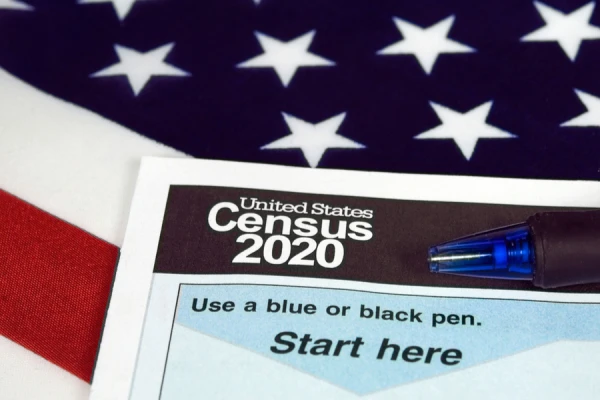
Washington D.C., Jul 3, 2019 / 04:18 pm (CNA).- The US bishops on Tuesday applauded the Supreme Court's recent decision blocking the inclusion of a citizenship question on the 2020 census under the reasons proffered by the Commerce Department.
“We affirm last week’s decision by the Supreme Court that the inclusion of a citizenship question must ensure genuine reasons for such inclusion,” Bishop Frank Dewane of Venice and Bishop Joe Vásquez of Austin, chairs of the USCCB's domestic justice and migration committees, said July 2.
“We reaffirm that all persons in the United States should be counted in the Census regardless of their immigration status and reemphasize our judgment that questions regarding citizenship should not be included in the Census. We hope that this view will prevail, whether by administrative action or judicial determination.”
In its June 27 decision in Department of Commerce v. New York, the court found that the Trump administration's reason for seeking to include a citizenship question on the census seemed “contrived”. The ruling was 5-4.
The administration agreed July 2 to start printing the questionnaire without the question.
The decennial census is used in districting for elections, and helps determine the allocation of federal funding to the states.
A question about whether the respondent is a citizen has not appeared on the census questionnaire since 1950.
The administration had argued for its inclusion under the Voting Rights Act of 1965, saying it could strengthen protections for minorities.
But some researchers at the Census Bureau had found that including the citizenship question could lower the response rate of minority and immigrant households, lowering the quality of the census data.
If you value the news and views Catholic World Report provides, please consider donating to support our efforts. Your contribution will help us continue to make CWR available to all readers worldwide for free, without a subscription. Thank you for your generosity!
Click here for more information on donating to CWR. Click here to sign up for our newsletter.



The contrivance is more the efforts of Chief Justice Roberts seeking to enhance his legacy as a moderate jurist assuming the swing vote role of former justice Anthony Kennedy. Rather than seek justice. The USCCB in similar vein is more the religious arm of the socialist egalitarian Democrat Party than defenders of truth and justice – Straws floating on the high seas outweigh astronomical abortion rates. How can a nation remain solvent if illegal entry is rewarded with all the rights and favors of citizenship? Democrats want their vote the USCCB want their empty pews filled and Chief Justice Roberts wants the kudos of Laurence Tribe.
““We affirm last week’s decision by the Supreme Court that the inclusion of a citizenship question must ensure genuine reasons for such inclusion,”
How about “To know how many citizens we have?”
“We reaffirm that all persons in the United States should be counted in the Census regardless of their immigration status”
Which they would be; they need only mark the box that says they’re not citizens.
How is that that it’s okay for the census bureau to ask on the long form all sorts of intrusive questions, but it isn’t okay to ask the simple question about whether the respondent is a citizen?
I would be grateful if the US bishops would spend rather more time on catechesis and on disciplining their priests (and themselves), and rather less on acting as the Democrats’ mouthpiece.
Great reply,Leslie.We need more of it, sorry I can’t as I am an Aussie.
I guess I should go look at historic census records to verify this, but was citizenship a standard question in the past? I remember seeing boxes to check off for one’s place of birth & parents’ place of birth but I’m not sure about US citizen status.
But it does sound like a reasonable thing to ask.
I read that it was there unti 1950, I think.
PS: Sure enough, I looked at a generic federal census record circa 1900 & there are citizenship questions re. year of immigration, naturalization, etc. Ditto for 1930.
A Louisiana state census c. 1860 did not have those questions but did ask place of birth.